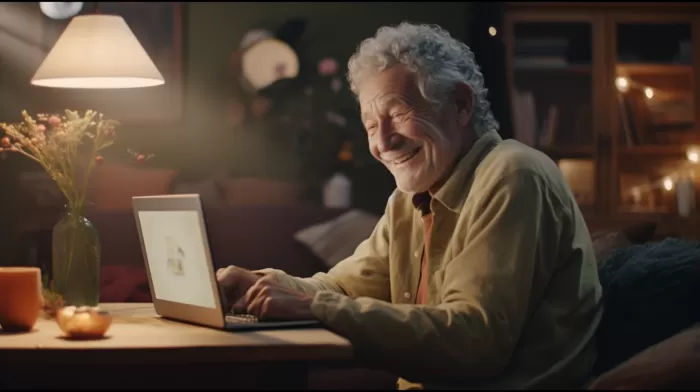It could be this is one of your worst-case scenarios. Or, it’s possible that you’ve never imagined it happening, until now, it is.
Your parent, friend or relative is in a nursing home or assisted living facility. And you’ve just been told that you’re no longer permitted to visit them.
Of course, with the spread of COVID-19, you’re thankful for this precaution. But you’re also worried about your parent or senior friend.
Are they scared? How much are they being told? Are they worried about you? And how healthy are they?
Rather than let worries and fear take over, there are some steps you can and should take, to keep in touch and help your older person stay calm in your absence.
Options for staying in touch
I know that if I had a friend or relative in a locked-down facility, my first concern would be whether they were afraid, now that they’re cut off from the world, and from you.
Your means of communication will depend upon a few things:
- Is there a landline phone in their room?
- Is there internet service?
- Does your older adult have access to a computer, tablet or smartphone?
- Is the facility allowing mail and packages to be sent to residents?
Phone Calls
Reach out and touch someone. In the digital age we’re living in, it’s easy to forget that the best way to stay connected is just a simple phone call. And depending on how digitally-savvy your senior family member or friend is, a good old-fashioned landline phone is still the simplest way to do that.
Hopefully, they have a landline phone in their room if they don’t have access to a mobile phone. But before you give them a ring, get acquainted with when mealtimes and other activities happen for your senior family member. That way you can call without interrupting their scheduled activities.
Video Calls
Zoom. A Zoom video call is the easiest way to get someone onto a video call who has no experience with video conferencing apps. If they can receive email, they can do this.
From your Zoom account, you’d send them an email with a link. They click on the link, and voila!, you and they appear on-screen together in your Zoom “meeting room.”
You’re able to talk, and even share your screens with each other, to view photos or anything else on your computer. It’s the next best thing to being there!
Zoom video conferencing can also be done on a tablet or even a phone, although it’s most easily managed on a computer. The only real difference will be in the size of the screen for viewing.
You can sign up for a free Zoom account at https://zoom.us/. A free account is all you need for unlimited usage, as long as you’re talking one-on-one. Your older person does not need to have an account, just an email address.
Smartphone apps. Skype and Google Duo are two apps that can be used on any mobile phone.
If you and your senior adult are Facebook users, Facebook Messenger also has a video phone option. Find their name in Messenger, click on the telephone icon to “call” them. You can see each other as well as talk.
Care packages
Be sure and check on whether the facility is still accepting packages before you send one. If they are, this is a good way to send comfort items, food, even a letter, to your senior family member.
Some things you may want to include in your package:
- Basic supplies
- Favorite snacks
- Comfort items (food, clothing, etc.)
- Photos
- A handwritten letter – remind them that they’re loved and missed!
- Handwritten notes from family and friends (they can email these to you and you can print them out)
Finally, remember that, because of their weaker immune systems, senior adults are at the highest risk of getting the COVID-19 virus.
It’s better to be safe than sorry, and thoroughly clean anything you’re including in a package, including wrappers and containers of grocery items (the virus can live on plastic for up to three days).
And, be sure to wash your hands before packing things up!
Sources:
- Coronavirus Senior Care: 32 Top Caregiver Questions Answered — DailyCaring
- How to Protect Yourself From Coronavirus When Grocery Shopping — Consumer Reports



